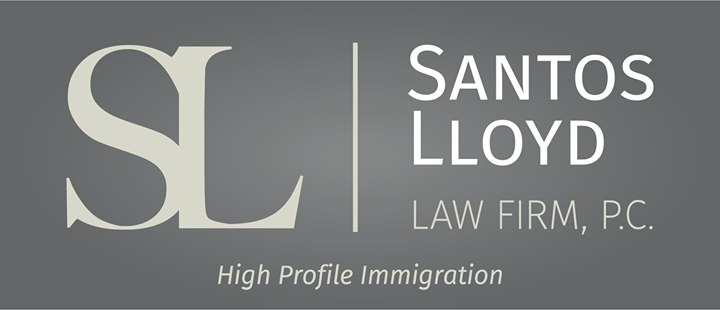El visado E-2: Una gran oportunidad de inversión en tiempos de cambio político
Shirin Navabi • February 13, 2025
Click here to read this article in English
El visado E-2 es un visado de no inmigrante que permite a los inversores extranjeros de países con tratado, vivir y trabajar en Estados Unidos creando o comprando un negocio. A diferencia de otras categorías de visado, no exige una cantidad mínima fija de inversión. En su lugar, los solicitantes deben demostrar que su inversión es sustancial y suficiente para garantizar el éxito de su negocio. El visado es renovable indefinidamente mientras el negocio siga activo y cumpla los criterios necesarios, lo que lo convierte en una opción atractiva para los empresarios que buscan oportunidades a largo plazo en Estados Unidos.
Una de sus principales ventajas es la flexibilidad. Los inversores pueden establecer un nuevo negocio, adquirir uno ya existente o entrar en oportunidades de franquicia. Además, los cónyuges e hijos menores de 21 años pueden acompañar al solicitante principal, y los cónyuges pueden solicitar autorización de trabajo. Esto convierte al visado E-2 en una opción práctica para las personas con mentalidad empresarial que deseen establecerse en el mercado estadounidense.
Aunque el visado E-2 en sí se ha mantenido como una opción estable, los cambios en las políticas de inmigración de Estados Unidos han influido en el proceso de solicitud y en la experiencia general del inversor. Entender estos cambios es esencial para cualquiera que esté considerando esta vía.
Cambios políticos y el visado E-2: Lecciones del pasado
Durante la primera administración Trump (2017-2021), las políticas de inmigración de Estados Unidos se volvieron más restrictivas en múltiples categorías de visados. Aunque el programa E-2 no se vio directamente limitado, se produjeron cambios más amplios. La Orden Ejecutiva «Buy American, Hire American» (compra en América, contrata en América), firmada en 2017, condujo a un mayor escrutinio de las solicitudes de visado, exigiendo a los inversores que proporcionaran pruebas más sólidas de que su negocio crearía empleos y contribuiría a la economía estadounidense. Esto dió lugar a un aumento de las Solicitudes de Evidencia/Pruebas (RFE por sus siglas en inglés) y denegaciones para aquellos que no podían cumplir con estas expectativas.
Otro cambio significativo fue la suspensión del Programa de Exención de Entrevistas, que obligaba a todos los solicitantes del E-2, incluidas las renovaciones, a asistir a entrevistas en persona en las embajadas estadounidenses. Esto alargó los plazos de tramitación y aumentó el escrutinio de las solicitudes. Además, se revisaron y ajustaron los acuerdos de reciprocidad de visados, lo que repercutió en los períodos de validez y los costes para determinados países. Por ejemplo, se consideró que los ciudadanos iraníes no podían optar al visado E-2 debido a la terminación del tratado. Estos ajustes afectaron significativamente a los inversores de las naciones afectadas, aumentando sus costes y la frecuencia de renovación.
A pesar de estos cambios políticos, la tasa de aprobación de visados E-2 se mantuvo relativamente estable. Según datos del Departamento de Estado de Estados Unidos, hubo más de 43.000 aprobaciones en 2019, lo que refleja la continua viabilidad del programa. Incluso en 2020, cuando la pandemia de COVID-19 causó interrupciones globales, las cifras de aprobación siguieron siendo significativas. Estas cifras ponen de relieve que, aunque el proceso se hizo más riguroso, los inversores bien preparados siguieron obteniendo visados al demostrar planes de negocio sólidos, inversiones sustanciales y contribuciones económicas claras.
Qué esperar en el futuro
A medida que la nueva administración Trump va tomando forma, es probable que se produzcan nuevos cambios en la política de inmigración. Aunque es demasiado pronto para predecir el impacto exacto sobre el visado E-2, las tendencias pasadas sugieren un mayor escrutinio. Sin embargo, el programa en sí se ha mantenido intacto a través de múltiples administraciones, lo que refuerza su fiabilidad para los empresarios extranjeros.
Quienes estén considerando la posibilidad de obtener este visado deben mantenerse informados y asegurarse de que sus solicitudes cumplen los requisitos cambiantes. Una estrategia de inversión bien preparada, una documentación clara y un plan de creación de empleo definido pueden marcar una diferencia significativa a la hora de sortear cualquier posible cambio de política.
Por qué el visado E-2 sigue siendo una buena opción
El visado E-2 sigue siendo una opción resistente y valiosa para los empresarios extranjeros. Incluso durante los períodos de cambio de política, las tasas de aprobación se han mantenido fuertes para los inversores con solicitudes bien estructuradas. La posibilidad de renovarlo indefinidamente, combinada con su flexibilidad en cuanto al tamaño de la inversión y el tipo de negocio, lo convierten en una de las vías más atractivas para los inversores internacionales.
Con la preparación adecuada, los inversores pueden solicitar con confianza el visado E-2, sabiendo que la historia ha demostrado su estabilidad incluso en un entorno político cambiante. Adelantándose a los cambios políticos y garantizando una estrategia empresarial sólida, los empresarios pueden aprovechar las oportunidades que ofrece el mercado estadounidense.
Si usted está listo para dar el siguiente paso hacia el lanzamiento de su negocio en los Estados Unidos, puede ponerse en contacto con nuestra oficina para obtener orientación de expertos y asistencia personalizada con su solicitud.
Este blog no pretende ser una asesoría legal y nada aquí debe interpretarse como el establecimiento de una relación abogado-cliente. Programe una consulta con un abogado de inmigración antes de actuar sobre cualquier información que aquí lea.

Once you have connected with a college program, have been admitted to the school, and deemed eligible to compete athletically, you will need to secure an F-1 student visa in order to actually attend your new college and begin your time as a student athlete. The first step in the visa process is to receive your Form I-2

For many talented athletes around the world, U.S. college athletics represent a remarkable opportunity to combine elite athletic competition with higher education. In sports such as basketball, soccer, track and field, and tennis, among others, hundreds of colleges and universities across the United States offer struct

Under the new regulation, if a person filed or files Form I-589, Application for Asylum and for Withholding of Removal after October 1, 2024, and the application remains pending with USCIS for 365 days, the applicant must pay an Annual Asylum Fee (AAF) on the one-year anniversary of his or her filing date.



